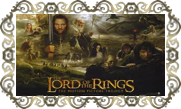
79 YEARS AGO
The telephone scene. It’s a staple of the classic movie. Chances are the best of them — like the one featuring the old candlestick model as a G-rated sex toy for Donna Reed and Jimmy Stewart in “It’s a Wonderful Life” — got a replay workout over the holidays. But Ms. Reed and Mr. Stewart didn’t win Oscars for their telephone scene. Luise Rainer did for hers.
Ms. Rainer (pronounced RYE-ner) died[1] this week at 104, the first actor and one of only four in history to win back-to-back Oscars.
Ms. Rainer’s first Academy Award was pretty much for a quivery, gulpy, sniffly — and, yes, sob-inducing — three-minute scene[2] in “The Great Ziegfeld.” In it, Ms. Rainer, as Anna Held, picks up the telephone (also a candlestick model) to wish her ex-husband the very best of health and happiness in his new marriage. She ends the scene in a swoony heap as her maid fusses over her.
The work was not unequivocally admired.
In his review in The New York Times in April 1936, Frank S. Nugent wrote that “Miss Rainer continues to justify the epithet winsome, but is inclined to emotional excesses which are not entirely justified and frequently were extremely trying.”
Mr. Nugent seems to have softened toward her role by the following January, when he and the rest of the members of the New York Film Critics were among the first to reward her, voting her performance “the outstanding feminine characterization of the year.”
In an article several days later, giving away a few trade secrets, he acknowledged that Ms. Rainer was no shoo-in and required several ballots. “Like most jury decisions, the New York Film Critics’ selection” was “an approximation, not a realization of justice,” he wrote. He added, “Looking back on it now, I am not at all sure that we voted as wisely as we might have,” and he singled out Ms. Rainer. “There is no reasoned judicial explanation for it, no micrometer to justify the rejection of the one and the selection of the other. Nor is there, so far as I can see, any demonstrable proof that Miss Rainer’s performance was more perfect (if that be an admissible comparative) than Rosalind Russell’s in ‘Craig’s Wife.’ ”
But the very next month — a few weeks before Ms. Rainer won the Oscar for her “Ziegfeld” performance — Mr. Nugent was quick to admire her in his review “The Good Earth,” a film adaptation of a Pearl S. Buck novel.
“Luise Rainer is tragically real as O-Lan,” Mr. Nugent wrote, “bringing to life the pathetic slave girl who was so modest yet so indomitable, so generous and selfless and loyal.”
She walked off with an Oscar for that role, too.
Photo
77 YEARS AGO
Peter Jackson’s film adaptation of J. R. R. Tolkien’s “The Hobbit” continued to rule the box office over New Year’s. The book has been no slouch in sales, either, over the decades. How was it first received? Reviewing its debut in The Times in 1938, Anne T. Eaton wrote, “This is one of the most freshly original and delightfully imaginative books for children that have appeared in many a long day.” The book languished in the children’s realm for about 17 years before Mr. Tolkien, a glacially slow writer, produced its follow-up, “The Fellowship of the Ring,” which immediately gained adult fans, including W. H. Auden. In his review in The Times, Mr. Auden wrote, “No fiction I have read in the last five years has given me more joy.”
The Times’s book critic Orville Prescott did not feel quite the same way. “This is a remarkable book,” he wrote, “but it is far from a completely successful one. It grows tedious. It becomes repetitious. And finally it frankly bores.” MARY JO MURPHY














